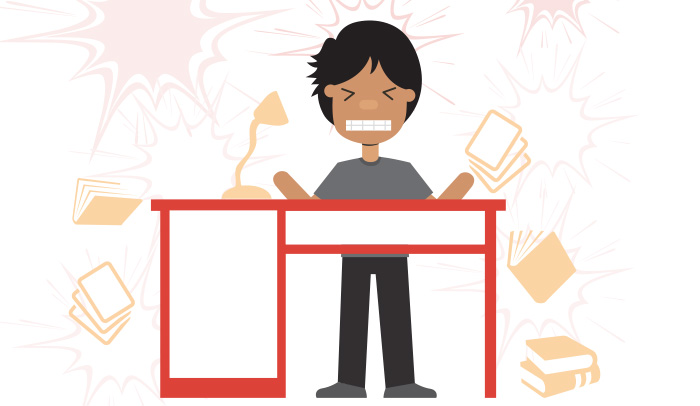The new food rule: Your guide to quick nutrition decisions
Rate this article and enter to win
Should you eat this? Often, or just occasionally? What does the label say? Nutrition labels don’t make food decisions as simple as we’d like. How you evaluate a food product depends on various factors, including your health goals. Here’s one quick way that you can quickly estimate whether or not a product is reasonably healthy using just three pieces of information from the label:
- #1 Grams of fiber
- #2 Grams of protein
- #3 Grams of sugar
The chart below may look complicated at first glance, but stay with us. Once you get this, you can do it in your head in just a few moments. For this visual demo, we compared three varieties of Kind® bar, a snack you may be counting on to fortify you between classes. Kind® bars have rapidly come to dominate the nutrition bar scene: Six of the top 10 fastest-selling nutrition bars are Kind® bars, according to data from Nielsen, the market research company. Not all flavors are created equal. Different varieties of the same product can vary widely in nutritional composition, so it’s worth checking each one.
1 Does one serving contain at least 3 grams of fiber? |
Oats & Honey Toasted Coconut (Healthy Grains)®
2.5g fiber Fiber Grams: 2.5 |
 |
Almond & Apricot®
6g fiber Fiber Grams: 6 |
 |
Dark Chocolate Nuts & Sea Salt®
7g fiber Fiber Grams: 7 |
 |
2 Add the number of grams of protein to the number of grams of fiber. Then subtract the number of grams of sugar. |
If you end up with a positive number (above zero), the food product meets a basic standard of nutritional value. If your number runs negative (below zero), consider eating something else.
Almond & Apricot®
6 + 3 – 10 = -1 |
 |
Dark Chocolate Nuts & Sea Salt®
7 + 6 – 5 = +8 |
 |
Wellness Campaign tools & resources
This strategy for reading food labels is known as the Altman Rule. It is named for Wayne Altman, MD, a family physician practicing in Arlington, Massachusetts, and professor of family medicine and director of medical student education in the Department of Family Medicine at Tufts University School of Medicine, Boston. Dr. Altman and Kerri Hawkins, MS, RD, LDN, co-created WellnessCampaign.org to help people make permanent, positive changes in their health.
Wayne Altman, MD, FAAFP; family physician, Family Practice Group, Arlington, Massachusetts; professor of family medicine at Tufts University School of Medicine, Boston; director of medical student education, Department of Family Medicine at Tufts; co-founder, Wellness Campaign.
Kerri Hawkins, MS, RD, LDN, cPT; dietitian, Family Practice Group, Arlington, Massachusetts; co-founder, Wellness Campaign.
Academy of Nutrition and Dietetics. (2014, October 8). Eat right when money’s tight. Retrieved from
https://www.eatright.org/resource/food/planning-and-prep/eat-right-on-a-budget/eating-right-when-moneys-tight
Fairchild, C. (2014, February 10). Why Kind bars are suddenly everywhere. Fortune. Retrieved from https://fortune.com/2014/02/10/why-kind-bars-are-suddenly-everywhere/
Kind. (2014). [Website]. Retrieved from https://www.kindsnacks.com/
US Department of Agriculture. (2011). Eating better on a budget. Retrieved from
https://www.choosemyplate.gov/ten-tips-eating-better-on-a-budget
US Department of Agriculture. (2016, March 23). Read the food label. Retrieved from
https://www.choosemyplate.gov/budget-food-label
US Food and Drug Administration. (2015). How to understand and use the nutrition facts label. Retrieved from https://www.fda.gov/Food/IngredientsPackagingLabeling/LabelingNutrition/ucm274593.htm
WellnessCampaign.org. (n.d.). [Website]. Retrieved from https://www.wellnesscampaign.org/





